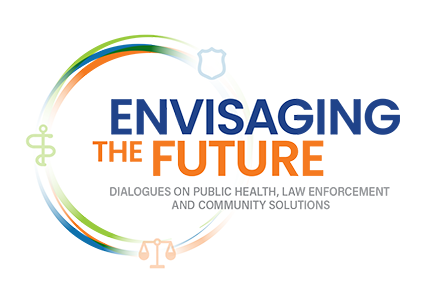
The Role of Public Health in the Primary Prevention of Interpersonal Violence: A Global Systematic Review
Authors: Lara Snowdon1, 2, Zara Quigg1, Conan Leavey1
Institution(s): 1World Health Organization Collaborating Centre for Violence Prevention, Public Health Institute, Liverpool John Moores University, Liverpool, UK
2World Health Organization Collaborating Centre on Investment for Health and Wellbeing, Policy and International Health, Public Health Wales, Cardiff, UK
Publication: Journal of Community Safety and Well-Being, Vol 9(4), December 2024
Executive Summary
This systematic scoping review examined the international landscape of public health frameworks for violence prevention, analysing seventeen frameworks published primarily by national and international public health bodies. The research reveals both the significant progress made in establishing public health leadership in violence prevention and critical gaps that must be addressed to achieve effective, equitable implementation globally.
Background and Significance
Interpersonal violence represents a major global health challenge, contributing significantly to premature death, injury, and lifelong consequences for individuals and communities. Following the 1996 World Health Assembly resolution declaring violence a major public health problem, there has been increasing recognition that violence can be predicted and prevented through evidence-based public health approaches.
This study addresses a critical need to understand how public health bodies worldwide are conceptualising and implementing primary prevention strategies for interpersonal violence, particularly at a time when the public health approach to violence prevention is gaining prominence.
Methodology
A comprehensive systematic literature search was conducted across academic databases (CINAHL, Medline, Web of Science) and grey literature sources. The search strategy focused on identifying evidence-based frameworks for primary prevention of interpersonal violence as part of public health approaches. Following PRISMA guidelines, seventeen frameworks were included for thematic analysis.
Key Findings
Nine Core Prevention Themes
The review identified a rapid, recent growth in public health violence prevention frameworks, with 82% published in the past decade. The review also found significant global disparities in the development of these frameworks, with 59% from high-income countries, and 18% from middle-income countries. Through thematic analysis, nine primary prevention themes were identified across the socio-ecological model:
Individual Level:
- Families, caregivers, and early years – Investing in childhood development as a protective factor.
- Early identification and support – Trauma-informed services and specialist support.
Community Level:
- Schools, education, and skill development– Whole-school approaches and socio-emotional learning.
- Safe community environments– Environmental modifications and community-level interventions.
- Safe activities and trusted adults– Positive adult relationships and skill-building activities.
Societal Level:
- Social norms and values– Challenging harmful norms, particularly around gender roles.
- Empowerment and equality– Addressing structural inequalities and marginalization.
- Policy and legislation– Robust legal frameworks and human rights approaches.
- Poverty reduction – Addressing socioeconomic determinants of violence.
Implications for Law Enforcement and Public Health Collaboration
Shared Prevention Strategies
The research demonstrates significant overlap in prevention strategies across different forms of interpersonal violence, suggesting opportunities for integrated, multi-component approaches rather than siloed interventions. This finding is particularly relevant for law enforcement agencies working to prevent violence through community partnerships.
Evidence-Based Practice
All frameworks emphasized the need for multi-component programming as part of whole-system approaches. This aligns with evidence showing that interventions addressing multiple factors across the socio-ecological model are more effective than single-component approaches.
Implementation Challenges
The review identified critical gaps in implementation research, highlighting the need for:
- Better understanding of how to adapt interventions across different cultural and resource contexts
- Investment in research exploring the practical implementation of prevention approaches
- Development of frameworks specifically designed for low-resource settings
Critical Gaps and Future Directions
Global Equity in Evidence Development
The dearth of frameworks from low-income countries represents a fundamental challenge to global violence prevention efforts. Given that over 90% of violence-related deaths occur in low- to middle-income countries, this gap undermines efforts to develop contextually appropriate, effective interventions.
Structural Determinants
While frameworks identified poverty reduction and empowerment as key themes, there remains less evidence on how to effectively address community and structural determinants of violence, including gender inequality, poverty, and social marginalization, in comparison to individual-level interventions.
Gender-Transformative Approaches
The review revealed interesting variations in how different types of violence are approached. Violence against women frameworks consistently invoked gender-transformative approaches, reflecting the gendered dynamics of violence perpetration and the association between harmful masculine gender norms and violent behaviour. Evidence demonstrates the efficacy of gender transformative approaches in reducing various forms of interpersonal violence, suggesting potential for broader application across violence prevention frameworks.
Relevance for GLEPHA Members
This research provides valuable insights for law enforcement and public health practitioners working collaboratively on violence prevention:
- Integrated Approach: The nine themes provide a roadmap for comprehensive, multi-sector violence prevention that requires both law enforcement and public health expertise
- Primary Prevention Focus: The emphasis on primary prevention offers opportunities to address root causes before violence occurs, potentially reducing the burden on reactive law enforcement responses
- Evidence-Based Practice: The frameworks provide a foundation of evidence-based strategies that can inform joint initiatives between law enforcement and public health agencies
- Global Perspective: Understanding international approaches can inform local adaptation and implementation strategies
Conclusions
This systematic review demonstrates the leadership role that public health has assumed in violence prevention framework development globally. However, it also reveals critical gaps in evidence and implementation that must be addressed to achieve truly effective, equitable violence prevention.
The nine identified themes provide a comprehensive foundation for prevention efforts, but success requires sustained investment in implementation research, addressing global inequities in evidence development, and fostering genuine collaboration between public health, law enforcement, and community partners.
As violence prevention continues to evolve as a shared responsibility across sectors, this research provides both a foundation for current practice and a roadmap for addressing critical gaps in our global response to interpersonal violence.
The systematic scoping review was a collaborative research project between two World Health Organization Collaborating Centres at Liverpool John Moores University and Public Health Wales. This research was undertaken as part of PhD research exploring the global implementation of public health approaches to violence prevention. The full article is available open access in the Journal of Community Safety and Well-Being – https://www.journalcswb.ca/index.php/cswb/article/view/406/1156






